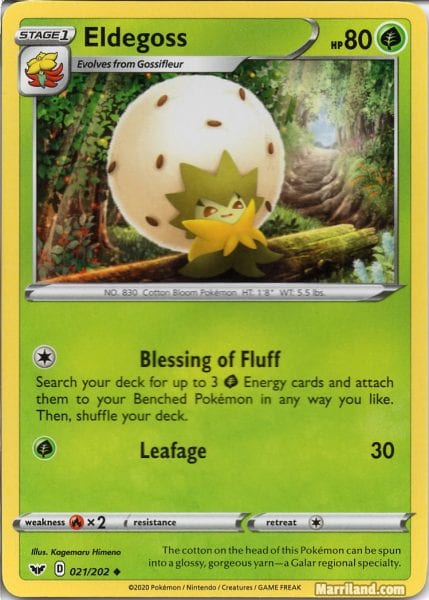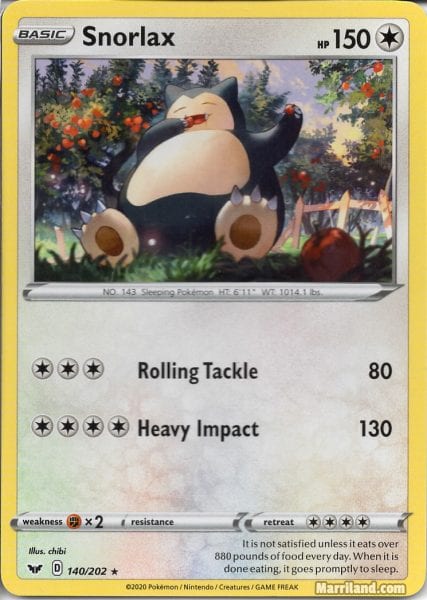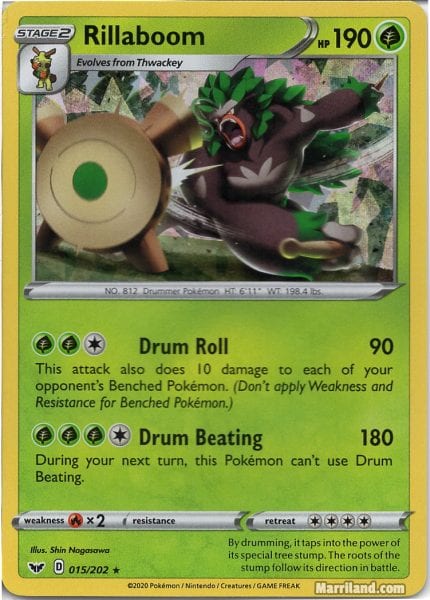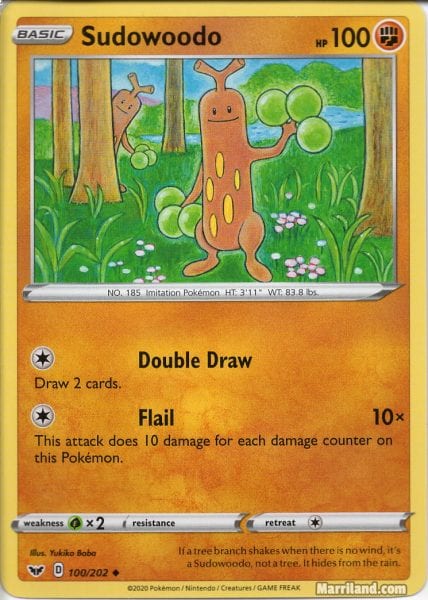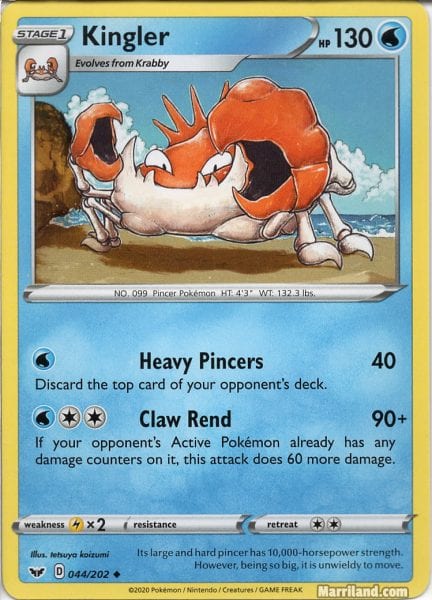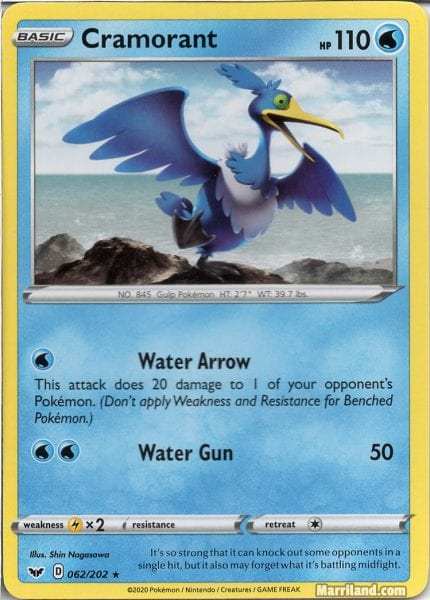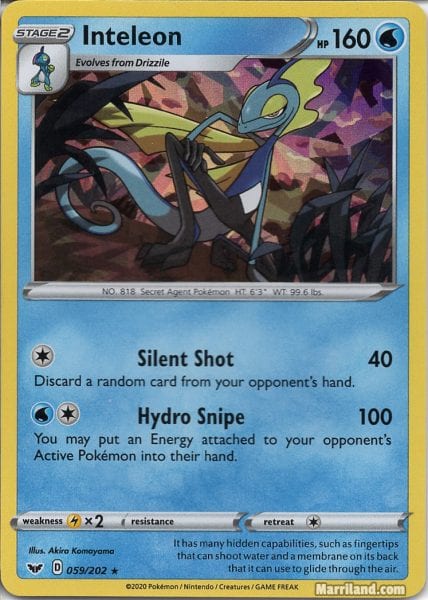The first set in the Pokémon Sword & Shield series of the Pokémon TCG is set to be released on February 7, 2020, and Prerelease tournaments are going on from January 25, 2020 through February 3, 2020, so there’s still a chance to get some of the new cards early if you go to one of the Prerelease events.
Pokémon was kind enough to send over the three Theme Decks from the Sword & Shield expansion — Rillaboom, Cinderace, and Inteleon — which contain a preconstructed deck that is ready to go and play against your friends with. These are great for beginner players and also offer quite a few helpful Trainer cards for advanced players. In addition to the unboxing video above, I’ll list the deck contents for each deck below, along with my thoughts on it.
Rillaboom Theme Deck
Pokémon
3 Grookey (#011)
3 Thwackey (#013)
2 Rillaboom (#015)
3 Gossifleur
2 Eldegoss
3 Cottonee
2 Whimsicott
2 Maractus
2 Snorlax
Trainers
4 Hop
3 Professor’s Research
2 Poké Kid
1 Pokémon Center Lady
4 Great Ball
2 Potion
2 Switch
1 Ordinary Rod
1 Pokégear 3.0
Energy
18 Grass Energy
The Rillaboom Theme Deck utilizes Rillaboom as the primary attacker to hit for heavy damage while using Eldegoss and Whimsicott for set up and disruption.
Ideally, you’ll want to start with a Gossifleur and use its Call for Family attack to search for up to 3 basic Pokémon and put them onto your bench (Grookey, Snorlax, and then either another Grookey or another Gossifleur is a good idea), then evolve your Gossifleur into Eldegoss and use its Blessing of Fluff attack to search for up to 3 Grass Energy and put them onto your Benched Pokémon in any way you like.
This is incredible Energy acceleration and will allow you to make use of Snorlax’s heavy-hitting attacks very quickly, or charge up some Grookey, Thwackey, or ideally Rillaboom. If you can get Rillaboom into play, alternating between Drum Beating and Drum Roll provide good offense for a Theme Deck.
Cinderace Theme Deck
Pokémon
3 Scorbunny (#031)
3 Raboot (#033)
2 Cinderace (#036)
3 Vulpix
2 Ninetales
3 Wooloo (#153)
2 Dubwool
2 Drampa
2 Sudowoodo
Trainers
4 Hop
3 Professor’s Research
2 Poké Kid
2 Bede
4 Great Ball
2 Switch
1 Ordinary Rod
1 Pokégear 3.0
1 Pokémon Catcher
Energy
18 Fire Energy
The Cinderace Theme Deck is more about recovering and sustainability rather than as heavy of offense, but it can still dish out a lot of damage with Cinderace’s Bright Flame attack, which does a heavy 160 damage for two Fire Energy and one Colorless Energy, but if you get tails on a coin flip, you have to discard two Energy attached to it.
Both Cinderace and Ninetales have Flame Cloak for an attack as well, which does some damage but also attaches a discarded Fire Energy to the Pokémon, charging either up without having to use your attachment for the turn, allowing you to attach Energy to your Benched Pokémon instead and also providing a chance for your Pokémon to recover after being knocked out by getting some of the discarded Energy back.
Dubwool is in there to reduce damage and buy time, but can also snap for 120 damage for three Colorless Energy at the cost of doing 30 to itself. It’s not really too useful for the strategy, though. Sudowoodo can help you draw cards from your deck very quickly and can also hit with Flail for a lot of damage whenever you’re done with it if the foe attacks it. Lastly there’s Drampa that hits for 80 damage for just two Colorless Energy, but you discard the top 2 cards of your deck. This can be a good way to fill your discard pile with Fire Energy, but it’s also very risky as you can wind up discarding important cards like your Cinderace or Raboot.
Inteleon Theme Deck
Pokémon
3 Sobble (#055)
3 Drizzile (#057)
2 Inteleon (#059)
3 Chewtle
2 Drednaw
3 Krabby (#043)
2 Kingler
2 Cramorant
2 Mantine
Trainers
4 Hop
3 Professor’s Research
2 Poké Kid
4 Great Ball
2 Pokémon Catcher
2 Switch
1 Energy Switch
1 Ordinary Rod
1 Pokégear 3.0
1 Pokémon Catcher
Energy
18 Water Energy
The Inteleon Theme Deck may not have as heavy of a hitter as its star Pokémon, Inteleon, as the other two decks, but the disruptive attacks of Inteleon make up for it. It has Silent Shot to discard a random card from the opponent’s hand and a very affordable Hydro Snipe for 100 damage, costing just one Water Energy and one Colorless Energy, and it also allows you to put an Energy card attached to the opponent’s Active Pokémon back into their hand, slowing them down while doing a lot of damage at the same time. It’s optional, too, so you can knock them out with it and choose not to return the Energy to deprive them of resources.
Kingler is also an excellent addition to the deck and is easier to get out than Inteleon due to being just a Stage 1 Pokémon. Its Heavy Pincers attack does 40 damage for one Water Energy but you also have the opponent discard the top card of their deck, and Claw Rend for one Water Energy and two Colorless does an impressive 90 damage, but does 60 more damage if the target has any damage counters on it already, meaning you can do 150 for three Energy. Not bad at all.
This pairs well with the two Cramorant in the deck, which can snipe any of the opponent’s Pokémon for 20 damage for one Water Energy, including Pokémon on the Bench. This is a great way to mark threats for Kingler to clean up later on.
Drednaw does more damage based on the foe’s Retreat Cost and can also do heavy damage and stop the foe from retreating, although it requires a lot of Energy that I personally think is better used on Inteleon and Kingler. Mantine can help search your deck for Water Energy but, unlike Eldegoss from the Rillaboom deck, it only adds the Energy to your hand, meaning you’re still restricted to attaching just one Energy per turn.
Something nice that the Inteleon deck has over the other two is two Pokémon Catchers, which are very helpful for the deck’s strategy but are also useful cards in competitive play. There’s also an Energy Switch in there to move your Energy around, but it’s still not quite a true Energy accelerator, so getting the Energy into play in the first place may take a bit of time.
More About The Theme Decks
All three Theme Decks come with 3 Professor’s Research, which is like the old Professor Oak, the Professor Juniper and Professor Sycamore Supporter cards, etc., where you discard your hand and draw 7 cards. These cards are now Rare rarity, so getting them from booster packs may not be as reliable, so this is a good way to get a set of three of them — all three decks come with them, so regardless of which you choose, you’ll have some Professor’s Research for your competitive decks and will just need to pull or trade for one more for a play set.
Each Theme Deck also comes with a special holofoil pattern for one of the two Stage 2 Pokémon included in the deck, so there’s a special Rillaboom in the Rillaboom deck, a special Cinderace in the Cinderace deck, and a special Inteleon in the Inteleon deck. These have the same collection # and effects as the non-holo version, but it’s just a special variant for the respective deck.
For newer players, each of the decks come with a checklist on the back of a strategy sheet specific for the deck’s general strategy. There’s also a coin, some damage counters, and little note cards that help remind you about the different status conditions and things that you can do each turn. If you’re new to the game, you’ll want to keep those on you. There’s a nice quick start guide, a basic playmat, a deckbox to store your unsleeved deck in (putting card sleeves on your TCG deck and valuable cards is a good idea, though, but it won’t fit inside of the included deckbox), and a Trading Card Game Online code card so you can play with the deck online, adding its contents to your collection.
These decks will be available starting February 7, 2020 and are expected to have an MSRP of $12.99 (US).

